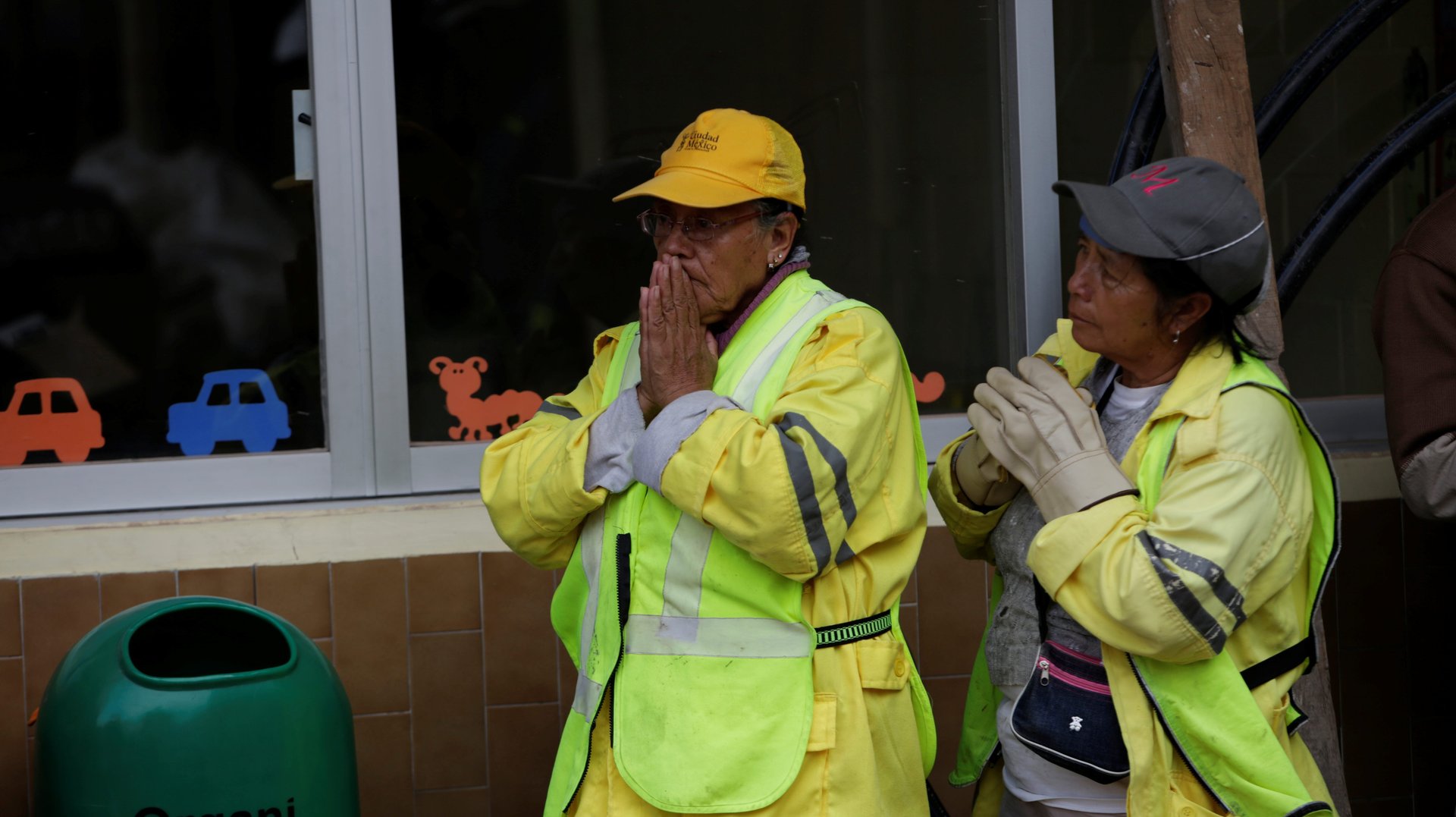A schoolgirl trapped in Mexico’s earthquake rubble won the world’s hearts—except she didn’t exist
It looked like a miracle in the making. A 12-year-old girl was discovered alive under the ruins of a school toppled by the Sept. 19 earthquake in Mexico City.


It looked like a miracle in the making. A 12-year-old girl was discovered alive under the ruins of a school toppled by the Sept. 19 earthquake in Mexico City.
Thermal instruments detected her presence, and rescue dogs confirmed it with a bark, setting off a furious campaign to get her out. Mexicans—and later the world—tracked the rescue operation on live TV.
Their hearts lifted with reports of her wiggling hand. They cheered on news that rescuers were able to get her water and oxygen. She became known as Frida Sofía, though it was unclear whether that was her real name, or the moniker assigned to her by rescue workers—but it didn’t matter, for she was living proof that in the midst of tragedy there is also hope. The story of “Frida Sofía” quickly spread from Mexican media to international news agencies and newspapers; #FridaSofia was used to tweet words of support for the trapped child the world over.
Then the show stopped abruptly. On the evening of Thursday Sept. 21, the military authorities in charge of the rescue operation said that there would be no rescue, because there was no “Frida Sofía.”
Details of how she got fabricated are fuzzy. Rescuers did pull several children out of the rubble—including, per the statements a rescue worker gave reporters at the time, one named Sofía. And on Thursday, officials said there was, they thought, someone still alive under the rubble, perhaps a woman. In the best-case scenario, the story was the result of confusion and ineptitude at a time of chaos; in the worst, it was an intentional attempt (but by whom?) to exploit people’s raw nerves to boost TV ratings or the government’s image. Either way, she was, in modern parlance, fake news.
It might seem a less harmful variety of fake news than the smears deployed against Hillary Clinton during the US presidential campaign or against Syrian refugees in Germany. The belief that she existed drew attention to Mexico’s plight, potentially inspiring people abroad to donate to earthquake recovery efforts. (You still can, by the way.) You could even argue that the news that she’s fake news is good news—it means that there is one less child in danger.
But “feel-good fake news,” as Nieman Journalism Lab has dubbed false information that tugs at people’s heartstrings, can be just as harmful as other kinds. The made-up girl siphoned resources away from other affected areas. The site at the school was flooded with volunteers, donated tools, and TV cameras that could have been more evenly distributed. There were many other collapsed buildings in Mexico City and neighboring states.
Moreover, the letdown after the truth came out probably erases much, if not all, of the goodwill generated by the fake story. It’s creating distrust in the government, the media, rescue workers, and fellow citizens at a time when everyone needs to pull together.
Whatever led to the mix-up, it’s a cautionary tale of how vulnerable to misinformation societies are at times of crisis. Indeed, “Frida Sofia” is reminiscent of a similar story when the last devastating earthquake hit Mexico City exactly 32 years previously. Back then, the mystery child was a boy under an apartment building. He became known as “Monchito,” and authorities and volunteers spent days trying to free him, according to newspaper El País, which covered the news as it unfolded. Mexicans anxiously followed their progress on TV and radio. A parade of celebrities, politicians, and even santería priests stopped by the ruins, in hopes of helping find the boy—or getting some good publicity. Monchito never materialized, dead or alive. At the time, a psychiatrist dubbed it a case of “collective psychosis.”
Since then, the web and social media have vastly increased the potential reach of these kinds of reality disruptions. That makes it all the more important to try to combat them. As rescue workers continue to search for real survivors, Mexico City is now circulating instructions on how to avoid distributing false information. “Before sharing news about the effects of an earthquake, verify the information with government sources; rectify the data before taking any action; inform the appropriate authorities,” they read:
During natural disasters, it’s standard practice for authorities to take measures against food and water shortages, the spread of disease, looting, and general panic. Perhaps taking preventive measures against feel-good fake news should become just as routine.